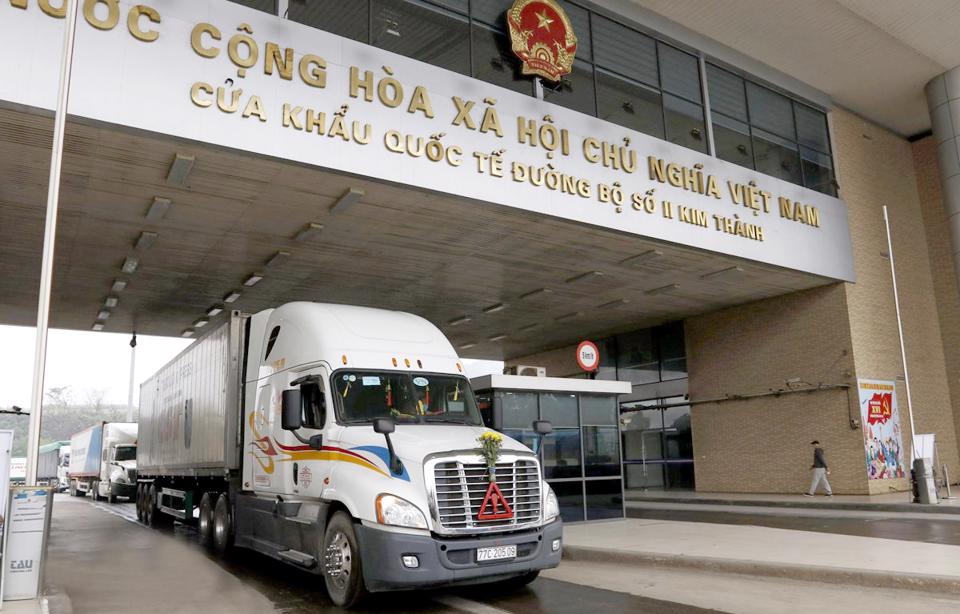Agricultures, Foods, News & Event
After 3 days, China “opened up”: Many kinds of agricultural products for export increased in price, dragon fruit attracted the most goods
China has gradually lifted many quarantine regulations with goods. Most notably, COVID-19 testing is not mandatory on imported goods. Therefore, many people expect that Vietnam’s export of agricultural products will be active again.
In order to create the most favorable conditions for agricultural exports when China opens its border, the Ministry of Agriculture and Rural Development said it has tasked relevant agencies to coordinate with units at the border gate to arrange personnel, arrange resources to support enterprises to export smoothly.
Prices of many fruits increase rapidly
China is the main consumption market of many export industries of Vietnam. Therefore, the country’s reopening of the market from the beginning of 2023 brings great expectations for businesses and industries, especially vegetables and fruits, seafood, fiber, cement, rubber, steel, and textiles…
As noted by PV, the domestic price of dragon fruit has increased rapidly in recent days. Accordingly, the price of dragon fruit in Tien Giang is being bought by traders 3 times higher than 1 month ago. Specifically, with red flesh dragon fruit grade 1 cost over 34,000 VND/kg; Type 2 costs 28,000 VND/kg; Grade 3 from 23,000 to 25,000 VND/kg.

In the “capital” of Binh Thuan dragon fruit, the price of all kinds of dragon fruits also increased sharply. In which, white flesh dragon fruit type 1 costs 13,000 – 15,000 VND/kg; Red flesh dragon fruit ranges from 35,000 to 37,000 VND/kg. This price makes gardeners extremely excited, stepping up the lights to make dragon fruit out of season.
Ms. Nguyen Thuy Thuan, Director of Thanh Long Tea Company (HCMC), shared with the press: “Currently, dragon fruit exports to China are attracting goods. Since China opened the border gate, the barriers have been removed. To prevent quarantine, my company has transferred all goods by sea to land to shorten the time to market.”
“The general situation of fruit businesses is quite exciting and bustling. If at the same time last year, dragon fruit dropped dramatically to 1,000-2,000 VND/kg, now it has increased to over 30,000 VND/kg. but there are no goods to buy” – Ms. Thuan informed.
The most “hot” item to mention is durian. In a market of more than 1.4 billion people, China, durian is very popular and consumed strongly, so there are many opportunities for Vietnamese durian. If at the end of December 2022, the price of first-grade durian purchased at the garden in the Mekong Delta reached about 80,000 VND/kg (an increase of 20,000 – 25,000 VND/kg compared to the previous season), then after the news that China opened the market, has increased by about 10,000 VND/kg.
Those who have durian for sale are excited and happy, but many people are also worried that the durian planting area will increase massively in the near future.
Allocate human resources and resources to support export enterprises
At a press conference held by the Ministry of Agriculture and Rural Development on December 30, 2022, Mr. Huynh Tan Dat – Deputy Director of the Plant Protection Department (Ministry of Agriculture and Rural Development) said that as soon as there is information that China will “open” the border. Since January 8, easing the quarantine of goods, the Plant Protection Department has issued a document directing the units at the border gate to arrange personnel and arrange resources to support export enterprises.
For packaging facilities, growing area codes, the unit has organized propaganda, training and guidance for all businesses to comply with the conditions specified in the protocols that Vietnam has signed with China.
According to Mr. Dat, after China reopens, countries will also massively export to this market. Therefore, it is possible that China will inspect more closely in terms of food safety, improve standards and product quality, and firstly, China’s orders 248, 249 will be applied from 2021. These are the challenges. that Vietnamese exporters need to pay close attention to to minimize risks.

According to Mr. Dat, after China reopens, countries will also massively export to this market. Therefore, it is possible that China will inspect more closely in terms of food safety, improve standards and product quality, and firstly, China’s orders 248, 249 will be applied from 2021. These are the challenges. that Vietnamese exporters need to pay close attention to to minimize risks.
According to Ms. Le Hang, communications director of the Vietnam Association of Seafood Exporters and Producers (VASEP), China’s opening of the border is good news for Vietnam’s exports. Similarly, if we see the advantage of this policy of China, other countries will quickly seize the opportunity. Therefore, Vietnam’s exports to the Chinese market, besides advantages, also face many difficulties and challenges.
“Maybe I will be pressured when there are too many products of the same type from many countries exporting to China,” Hang said.
Mr. Nguyen Van Long – Director of the Department of Animal Health added that up to now, 9 factories of 7 dairy companies have been exported to China, an increase of 50% compared to 2021. Especially after nearly 4 years. negotiation, we signed the protocol to export bird’s nest to China. Currently, the Department of Animal Health has issued a 7-step guide for units wishing to export oats and 5 units have submitted documents. At the beginning of 2023, the first batch of oats will be exported to this market.
According to information from the Management Board of the Economic Zone of Lao Cai province, the means of transporting goods for export/import and the driver will enter/exit through the international road border gate No. II Kim Thanh (Lao Cai), time Customs clearance from 7:00 to 19:00 (Hanoi time).
For people and accompanying vehicles will enter/exit through Lao Cai international border gate, customs clearance time is from 7:00 a.m. to 10:00 p.m. (Hanoi time).
In order for the import/export, import/export activities through border gates in Lao Cai province to go smoothly, the Management Board of the Lao Cai Economic Zone proposed the relevant units to have a plan to arrange their forces. , ensuring the necessary conditions to maintain export/import and entry/exit activities at border gates in accordance with regulations.
